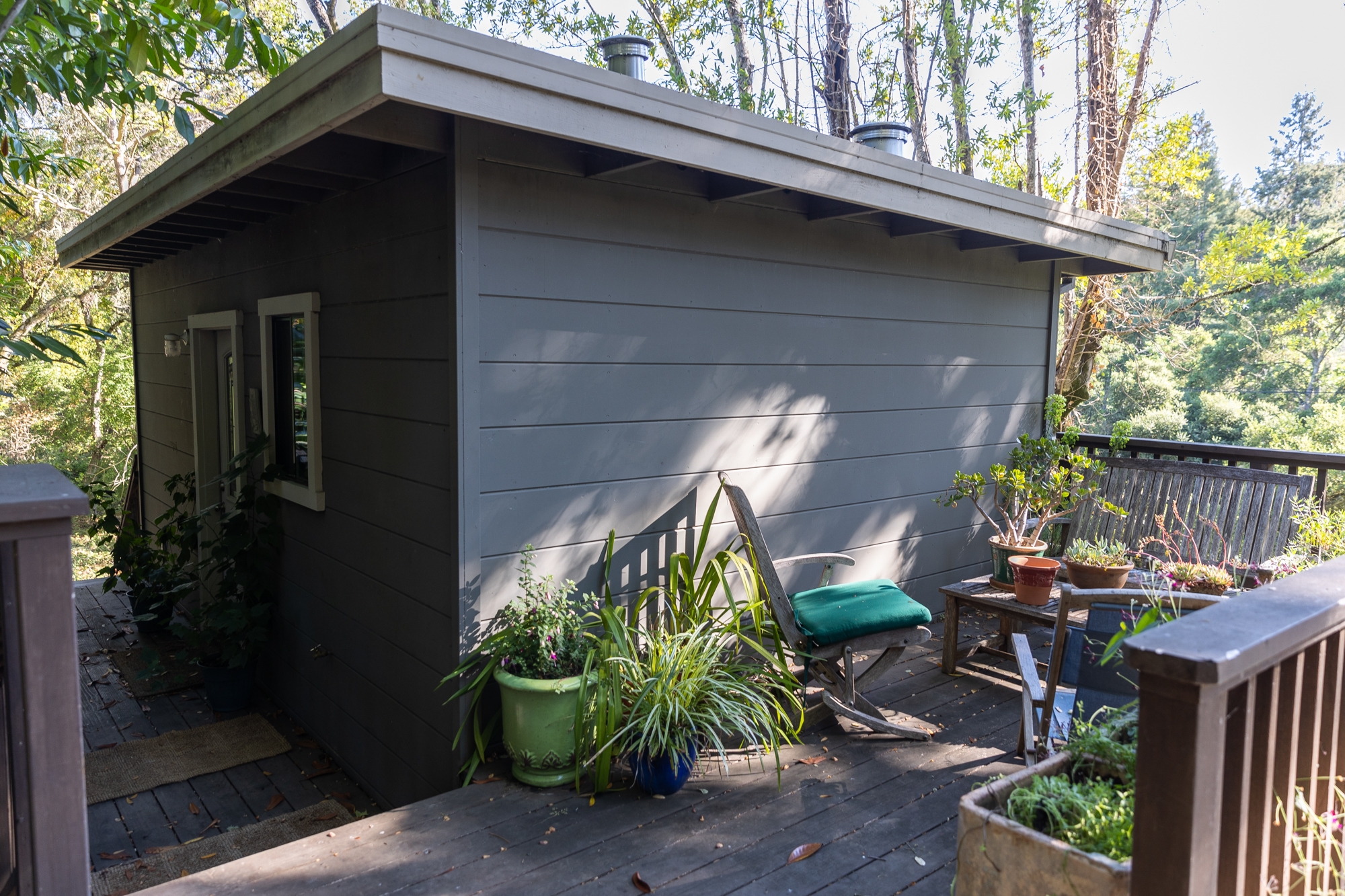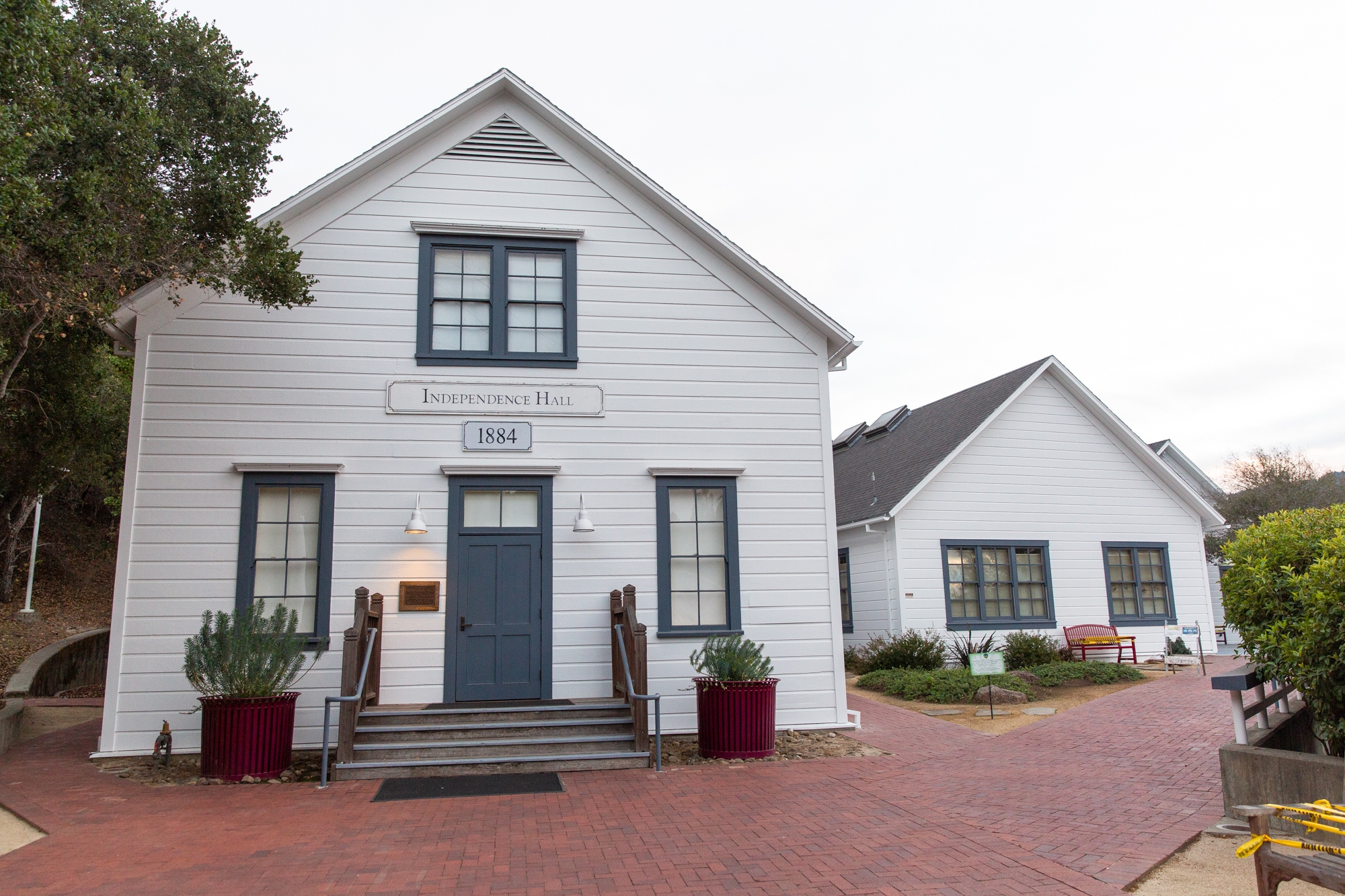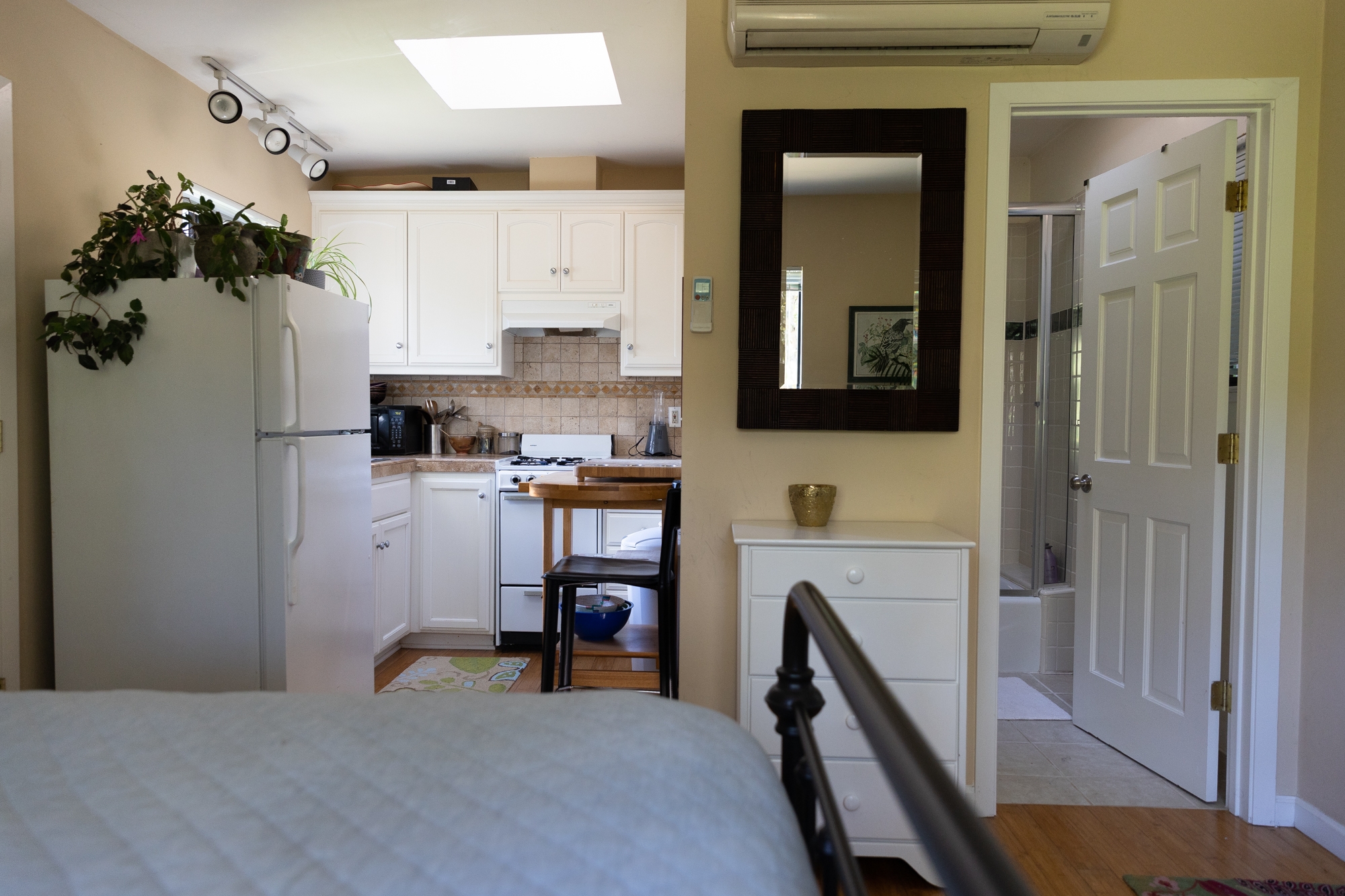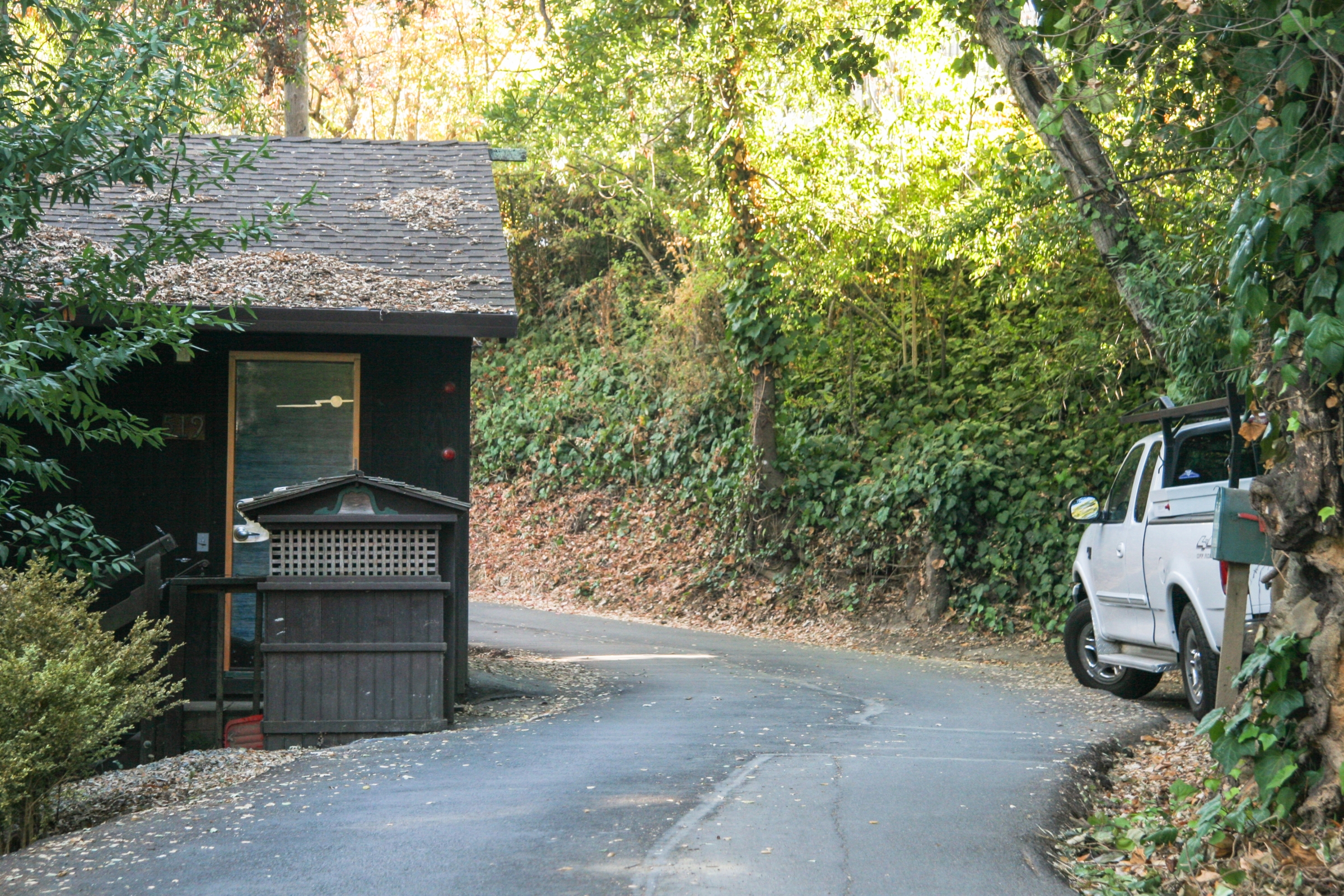With just 16 days left before a July 9 deadline to appeal significant increases in the number of housing units the town is required to designate for development, several Portola Valley residents urged the Town Council to protest.
Resident Bob Turcott has called the numbers "inappropriately high" and argued that adding the 253 of units allocated in the town's 2023-31 Regional Housing Needs Allocation (RHNA) would pose a threat to public safety. More housing could increase construction in high fire hazard zones and put further strain on the town's already "tenuous" evacuation capacity, he said. Resident Kristi Corley noted that infrastructure upgrades to services such as water systems, sewer systems, libraries, parking, roads, parks are all needed with added housing. Both have attended meetings for months opposing the bump in Portola Valley's RHNA numbers from just 64 last cycle.
The town's susceptibility to wildfires, the inability to construct new roads to provide evacuation routes and the need to hire more town staff to manage development projects were all concerns the Town Council cited about the numbers in a November 2020 letter to Association of Bay Area Governments (ABAG), which has been assigned 441,000 housing units by the California Department of Housing and Community Development this cycle. It is of note that towns are not actually required to build the housing, just to plan for it.
But any attempts to push back against the figures would be futile, staff members and the town's five councilmembers agreed, citing many failed past appeals by cities and towns across the state. The Portola Valley council opted not to file an appeal at the June 23 meeting.
The option to appeal also appeared on the Woodside Town Council agenda in the last month -- Woodside's RHNA target is jumping from 62 to 328 units. Woodside officials made the decision not to appeal for similar reasons.
Portola Vally council member John Richards said the town would face ridicule for appealing.
"Nobody is happy about 253 new houses in eight years, but this (RHNA guidelines) is a tool," said Portola Valley Mayor Maryann Derwin at a June 23 council meeting. "I can tell you right now if we appeal, we will lose. They will say build in an area that is not in fire danger." She noted that she believes there will be new laws that limit building in certain areas of the state because of fire danger. Some of Portola Valley may be included, but she doesn’t think all of the town should be a "no build zone."
Vice Mayor Craig Hughes echoed Derwin's comments.
"I think we could build 253 units in areas that are not high fire danger," he said. "I don't think we would prevail on appeal and I don't think it's worth putting staff time into."
Turcott said he is concerned about the effect of accelerated growth in high hazard areas.
"We were told, repeatedly, that the appeals process would take too much staff time and was doomed to failure, so appealing couldn't be justified," he said in an email. "In fact the requirements for appeal are modest — most of the 28 communities that appealed submitted a short narrative description of the issues — and the stakes in terms of life-safety are high, so what's the downside to appealing?"
Some 28 jurisdictions appealed their housing element figures to ABAG this round, including Palo Alto, Los Altos and Los Altos Hills, according to ABAG's website.
Hughes said the town should track other towns' appeals since Portola Valley's RHNA figures could increase if another appeal won, he said. Ultimately, no San Mateo cities appealed.
Portola Valley Town Manager Jeremy Dennis noted that once Cal Fire updates its fire hazard maps for the state in 2022, councilmembers would be remiss not "to have a conversation" about next steps in regard to the latest RHNA figures. The maps highlight the risk of wildfire in a particular area with a scale ranging from moderate to very high risk.
"I don't think we'll be alone in this issue (about fire safety and building)," Dennis explained. "Hillsborough and Woodside may have this issue."
Leora Tanjuatco Ross, associate director of the Housing Leadership Council, a San Mateo-based nonprofit focused on supporting housing development and affordability for residents and workers in the county, said she appreciates the leadership of towns such as Portola Valley and Woodside.
"It's great to see that every city in San Mateo County is planning for the housing that we need," she said in a Monday, July 26, email.
'Lots of available land in Humboldt County, California'
In Woodside, the Town Council is equally concerned about fire risks of building new homes in town.
Councilmember Sean P. Scott noted during a June 6 council meeting that perhaps developers could build in Humboldt County, where there is "lots of available land."
"... Nobody is addressing the downstream implications in terms of school capacity, (or) septic capacity," he said. "It's increased population density. We've already got a public high school that's bursting at its seams."
The town is considering how to encourage residents to build accessory dwelling units (ADUs), said Planning Director Jackie Young at the meeting. She'd like the town to host educational ADU workshops. She said San Mateo County's Second Unit Resources Center is a good resource for people interested in adding them to their homes.
New rules to relax development standards in the Glens neighborhood took effect the end of January to make it easier to build there, but few have taken advantage of them, Young noted. None of the 48 permits taken out for development in the neighborhood between March and June were for new building, but rather for fire safety measures such as electrical service upgrades, roofs and tree removals, she said.
The town does has a 7-lot subdivision coming in on Cañada Road, she said.
In the fall, the council is looking to relax development standards in the Southern Western Hills area of Woodside "a very wooded area" close to Skyline Boulevard, which could be challenging to develop, she noted.
Senate Bill 9 would allow homeowners to put a duplex on single-family lots with simple ministerial approval, which means it's automatically allowed if it meets a set of fixed standards. It would apply to "urban clusters," defined as towns with more than 2,500 residents (Woodside has a population of about 5,500 residents as of 2019, according to the Census Bureau) and fewer than 50,000. Young said she has been in touch with the U.S. Census Bureau to see if the legislation would apply to Woodside. There may be an update to what constitutes an urban cluster in the 2020 census, she said.
"That (urban clusters) is a specific aspect of this legislation we should look at closely," she said. "Lands on the east side of (Highway) 280 are falling into urban cluster."
Fire risk concerns
Portola Valley and Woodside residents have also expressed concern — at public meetings and in letters to the council — that new buildings may not even be considered insurable because of wildfire risk. According to a 2008 map prepared by Ray Moritz, a consultant in mapping fire-prone vegetation, "very high" threats exist in some Portola Valley neighborhoods, and "high" threats exist in many others, based on the proximity and topography of fire-prone forested areas.
Last week, a judge in Los Angeles ruled that California's insurance commissioner can order the "insurer of last resort" to offer more options for homeowners who can’t buy traditional coverage because they live in areas threatened by wildfires, according to media reports. The industry-run FAIR Plan had sued the commissioner, seeking to block his order.
Derwin said at a June 3 forum on wildfire risk that she lost her homeowner’s insurance after 28 years -- twice -- in the last year because her home qualifies as a "high value house in brush"
"My story is not unique," she said. Derwin said she cleared a 135-foot defensible space around her house and will work until she creates a 200-foot zone, she said, and attached Rain Bird sprinklers on the cleared lands to "squelch embers," built a fire access gate and learned how to create emergency go boxes.
In January, ABAG Executive Director Therese W. McMillan acknowledged Portola Valley’s November 2020 letter about natural hazard risk and infrastructure constraints to housing development.
"(ABAG) Staff believes that the draft RHNA methodology effectively incorporates both hazard risk and potential development constraints," McMillan said. "ABAG staff worked with local governments to gather information about local plans, zoning, physical characteristics and potential development opportunities and constraints. ... The Plan Bay Area 2050 Blueprint not only exclude Cal Fire designated 'very high' fire severity areas, but they also exclude 'high' fire severity areas in unincorporated communities as well as county-designated wildland-urban interface (WUI) areas where applicable."
ABAG realizes that planning for a "substantially larger RHNA" than previous cycles is a "daunting task" that all jurisdictions in the region are grappling with, she said.
"Fortunately, over $12 million in grant funding is available to assist local jurisdictions with implementing Plan Bay Area 2050 and RHNA," she added.








Comments
Registered user
Portola Valley: Central Portola Valley
on Jul 30, 2021 at 9:33 am
Registered user
on Jul 30, 2021 at 9:33 am
Excellent article about Woodside and Portola Valley not appealing their RHNA allocations. I actually live in Los Altos Hills, but a Portola Valley friend asked me to post more information about the fire-risk issues raised in this article. ABAG's statement about how they handle fire risk is reckless, head-in-the-sand denial disguised with clever wording. To illustrate by example: the area of Santa Rosa where 3000 homes were incinerated in the 2017 Tubbs fire were NOT in in the hazard zones where ABAG said that it factored in fire risk. ABAG would densify housing there. Much of Woodside and Portola Valley are the same: they're incorporated and in obvious high-risk areas, but they're not in Cal Fire's "very high hazard" zone. It is madness to densify housing in such places. The Fire Marshall and the ex-Fire Marshall of your fire district have come out against Senate Bill 9's push for densification precisely for that reason. Worse, look at the ADU in the article's picture. Wood siding, wood deck, open wood-framed eaves, and branches of a tree overhanging it all. Woodside and PV should be following California Chapter 7A building standards. Everything in that picture violates those provisions. It's in invitation to fire. Structures are the most flammable things in the landscape, and the biggest source of embers. Wildfire needs to be a major factor in land-use planning, not merely paid lip service to. And planning should anticipate decades more of climate change, not rely on risk maps that are ten years out of date.
Registered user
Portola Valley: Central Portola Valley
on Jul 30, 2021 at 10:45 am
Registered user
on Jul 30, 2021 at 10:45 am
There is a lot more to this story than what the article was able to cover.
While the article quotes ABAG Executive Director McMillan's claim that the '2050 Blueprint' excludes Cal Fire High and Very High Fire Hazard Severity Zones, it doesn't cite:
1. the ABAG senior planner who confirmed that Portola Valley's 'Growth Geographies' was such that fire hazard was not considered at all. In fact, whether Portola Valley was 100% Very High Hazard or 0%, our allotment would be the same: 253 units. (61% of Portola Valley’s area has been determined to be high or very high fire hazard.)
2. analysis that shows a systematic bias in the ABAG methodology that excessively burdens high hazard communities, where 'burden' means development in high hazard areas or, when development is excluded from high-hazard regions, effective growth that is much greater than low- and moderate-hazard communities. (The methodology makes Portola Valley’s effective growth 37% and Woodside’s 90%.)
3. analysis that shows the decisions of the 21 entities that make up San Mateo County to forgo appeal were not reached independently.
As fire science has clearly demonstrated, structures are wildfire intensifiers. Building in high hazard areas exposes new residents to risks not shared by those in low-hazard communities, increases the risks already faced by existing residents, and increasingly excludes both new and old residents from the insurance market.
ABAG should have taken fire and geologic risk into account, even for areas of low 'Growth Geography'.
Registered user
Menlo Park: Linfield Oaks
on Jul 30, 2021 at 1:33 pm
Registered user
on Jul 30, 2021 at 1:33 pm
Since an above post referenced the Tubbs fire, note that area of Santa Rosa -- where 3000 homes burned and dozens died -- is very similar to the El Camino corridor of Menlo Park, where hundreds of housing units are currently being built, with another 400 contemplated at SRI.
In particular, Linfield Oaks is bordered by the creek and the train tracks, giving us limited options to get in and out of the neighborhood. The new development at SRI will only add to the gridlock if fire occurs.
Instead of the more affluent hill communities trying to shift development over to the poor flatlanders, how about all of us pushing back against these new requirements that will force us to grow our city by 25% in a short period of time -- even as people continue to leave the more expensive areas of California.
Registered user
Menlo Park: other
on Jul 30, 2021 at 7:18 pm
Registered user
on Jul 30, 2021 at 7:18 pm
While RHNA requirements are going to increase density in Portola Valley and Woodside, it is nothing compared to the damage that SB-9 and SB-10 are going wreck upon the peninsula.
Why are Josh Becker and Marc Berman in favor of increasing density in areas with high fire risk combined with inadequate evacuation routes?
Write to Becker and Berman and ask: they will confirm that they are committed to voting yes on SB-9 and SB-10.
Their accountability needs to be NOW, because they will not accept it when disaster strikes.
Registered user
another community
on Jul 31, 2021 at 11:47 am
Registered user
on Jul 31, 2021 at 11:47 am
I need to object to "Observer's" complaint about "more affluent hill communities trying to shift development over to the poor flatlanders." First, it is absurd to claim that Linfield Oaks has significant wildfire risk. The areas that burned in Santa Rosa were either in the hills themselves or in the Coffey Park flatland neighborhood that was a half mile away from those hills. Linfield Oaks is 2 miles away from the nearest hills. The San Mateo and Santa Cruz County Wildfire Protection Plan puts Woodside and Portola Valley in the wildland-urban-interface (WUI), but the WUI ends at about Alameda de Las Pulgas. The simple fact is that these WUI communities face astronomical fire risk compared to the flatland neighborhoods that a miles distant.
Second, I can speak for myself, and I think many others who have objected to the fire risk with housing densification, that we have worked very hard to fight against this housing legislation for a variety of reasons beyond fire, and for the whole state and not just our communities. A hot-button issue of mine is the power grid, which struggles to stay up even with our current population. I have never objected to a flatlander raising concerns about the special circumstances there (such as loss of privacy and parking), just because those don't affect where I live as much as in the flatland communities. I'd appreciate it if Observer did not object to concerned residents living in the WUI speaking up about their fire-related concerns.
Third, if one is going to play the "affluent vs. poor" card, one should find a better representative for the poor than the residents of Menlo Park.
Registered user
another community
on Jul 31, 2021 at 11:51 am
Registered user
on Jul 31, 2021 at 11:51 am
I need to object to "Observer's" complaint about "more affluent hill communities trying to shift development over to the poor flatlanders." First, it is absurd to claim that Linfield Oaks has significant wildfire risk. The areas that burned in Santa Rosa were either in the hills themselves or in the Coffey Park flatland neighborhood that was a half mile away from those hills. Linfield Oaks is 2 miles away from the nearest hills. The San Mateo and Santa Cruz County Wildfire Protection Plan puts Woodside and Portola Valley in the wildland-urban-interface (WUI), but the WUI ends at about Alameda de Las Pulgas. The simple fact is that these WUI communities face astronomical fire risk compared to the flatland neighborhoods that are miles distant.
Second, I can speak for myself, and I think many others who have objected to the fire risk with housing densification, that we have worked very hard to fight against this housing legislation for a variety of reasons beyond fire, and for the whole state and not just our communities. A hot-button issue of mine is the power grid, which struggles to stay up even with our current population. I have never objected to a flatlander raising concerns about the special circumstances there (such as loss of privacy and parking), just because those don't affect where I live as much as in the flatland communities. I'd appreciate it if Observer did not object to concerned residents living in the WUI speaking up about their fire-related concerns.
Third, if one is going to play the "affluent vs. poor" card, one should find a better representative for the poor than the residents of Menlo Park.